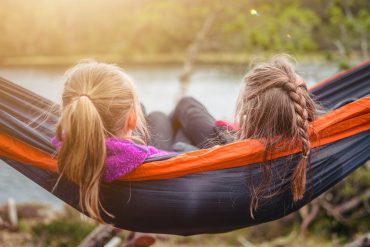That said, look for furniture, including a baby crib, changing tables and a rocking chair made of organic materials. Think bamboo, cork or solid wood from timber harvested sustainably instead of laminates and pressed wood. For finishes, opt for natural paint and stains, as they don’t off-gas volatile organic compounds (VOCs). Make your baby’s environment more organic and healthy with natural fibers (cotton, hemp, wool and flax or linen) for beddings and curtains. Go for hardwood, natural stone or bamboo for your flooring. What about rugs and carpets? Wool, sisal, hemp, cotton and bamboo are grown, harvested, and processed with low or zero use of pesticides and other toxins. This makes them an excellent choice for adding to your baby’s nursery for extra warmth.
Maximise Natural Light
The first thing people think of about increasing natural light indoors is saving energy and reducing bills. But sunlight has other important roles, especially in improving your baby’s health and development. Nurturing your child in an environment filled with natural light promotes better sleeping quality and patterns, for example. That’s because sunlight helps control the circadian rhythm (body’s sleeping pattern), according to the National Sleep Foundation. It also promotes production of vitamin D, which is crucial for a healthy immune system and strong bones. So, when renovating your home for a newborn’s arrival, rethink your window sizes.
Replace small windows with large ones, which involves creating additional window space through an existing wall. You could frame a new window opening or fit a new header with the guidance of an eco-conscious building expert. Besides large windows, place glass doors and skylight into your home design for extra sunlight. Then place your child’s nursery or play space in a room with natural light flowing. Don’t forget to use organic blinds or curtains to minimise harsh glare produced by sunlight at certain times of day, likely from 10 am to 2 pm.
Redesigning your home into a baby-friendly environment with eco-friendly features is a fulfilling journey. Apart from doing your part to conserve the environment, you’ll be creating living spaces that support your child’s well-being. So, swap old furniture, flooring and fabrics that may contain fire retardants or other toxics with those that have zero harmful chemicals helps lower risks of neuro-developmental problems. Enlarge windows, add skylights and glass doors to allow natural light inside the nursery and other living spaces for better sleep patterns and quality. Most importantly, work with an eco-friendly contractor for guidance on green home designs and sourcing of sustainable materials.
Kylee Harris is an educator who has taught in elementary schools in Singapore and Hong Kong for 5 years. She lives in Florida and continues to teach life skills to young adults in her community.










